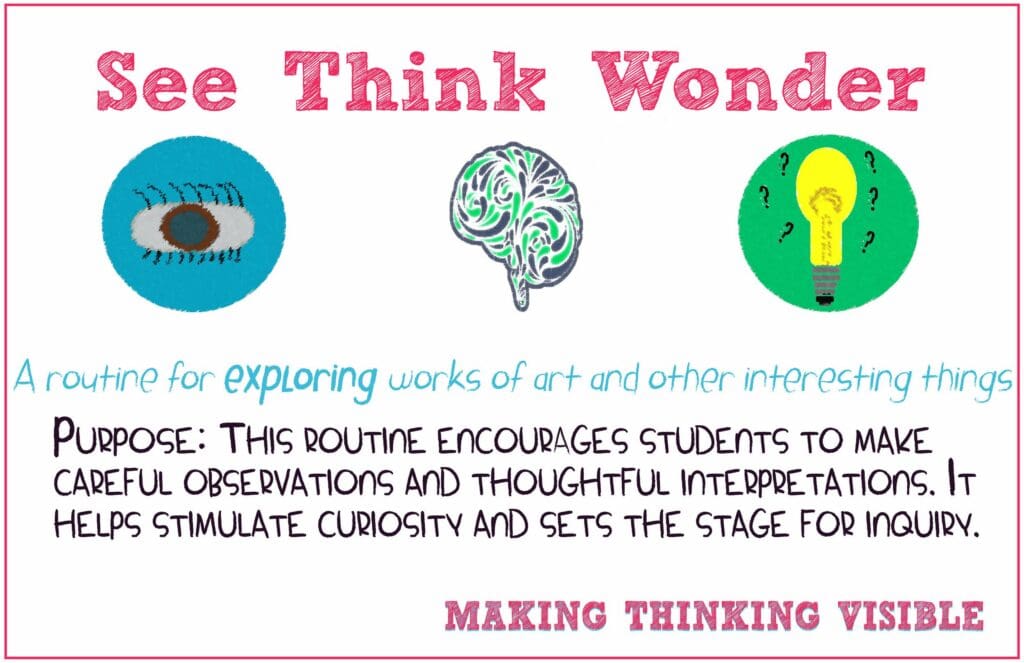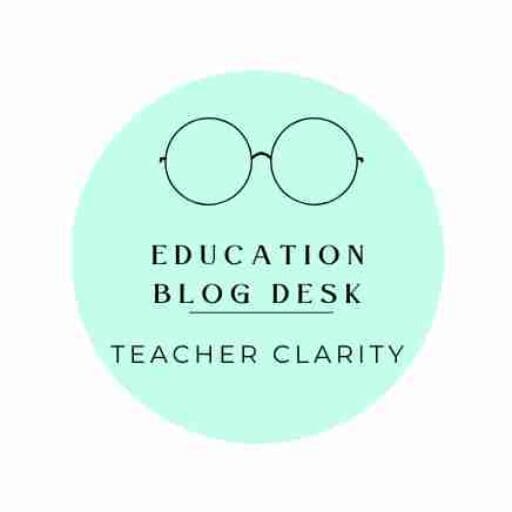https://www.youtube.com/watch?v=s0HqOdBvAxg&t=2s
Provoke and Release

What prompts students to ask questions in class? According to the book Beautiful Questions in the Classroom by Warren Berger, a two-part strategy could be considered “provoke and release.” The idea is to
- provoke curiosity in students, which will tend to inspire specific, authentic questions, then
- provide a release for those questions, in the form of activities and outlets that encourage and guide students as they express, document, and share their questions.
Provoke Curiosity
To get students to ask questions, you need to give them something to inquire and wonder about, according to Berger. You use something (object, picture, etc.) to introduce an element of mystery or surprise into the classroom to spark curiosity. This strategy is commonly used in science class. It is my favorite. The goal is to challenge students to examine and ask questions about the provocation. The key: Don’t explain. Give students a chance to wonder and inquire, without being given any “answers” too quickly.
Berger explains that one of the basic elements of curiosity is a sense of wonder—of not knowing, at least temporarily. Curiosity is fired when we encounter something interesting but not fully explained. Berger uses the 2010 TED Talk by high school math teacher Dan Meyer as an example of provocation.
“Meyer shared a story about how he changed his approach to a lesson to try to spark questions from students. The lesson involved teaching students to figure out how long it would take for water pouring into a tank to fill it, given the size of the tank. Typically, Meyer would have used printed materials providing the students with information and tips. But he decided to strip away much of that information—telling kids less so they would have to think and ask. Then he came up with an even better idea: He provided no information, said nothing, and simply showed his class a video of a water tank filling up— “agonizingly slowly,” he says. Students began “to look at their watches, rolling their eyes. And they’re all wondering, at some point, ‘Man, how long is it gonna take to fill up?’ That’s how you know you’ve baited the hook.” Once Meyer’s students were provoked to ask themselves that question, the inquiry process was under way.”
See Think Wonder Strategy

Berger explains See Think Wonder teaches inquiry-based thinking through a simple three-step process. Project Zero researcher Jessica Ross describes it as the “gateway drug” to making questioning visible. “It helps stimulate curiosity and sets the stage for inquiry,” according to the Project Zero Visible Thinking website.
See Think Wonder
Developed as part of Harvard’s Project Zero initiative, this is a simple three-step process for stimulating curiosity and setting the stage for inquiry. An image or artifact is placed in front of students, and then they are asked to respond to three prompts:
- See: What do you notice?
- Think: What do you think is going on?
- Wonder: What does it make you wonder?
Berger explains how the process works:
Some type of provocation is placed in front of students—it could be artwork, an image, an artifact, or a phrase on some topic. Students are then asked about the object in front of them, with three separate questions:
- What do you see?
- What do you think about it?
- What does it make you wonder?
As noted by Project Zero, by separating the two questions, what do you see? And what do you think? The routine helps students distinguish between observations and interpretations. And by encouraging students to wonder and ask questions, it stimulates curiosity and helps students reach for new connections.
The routine tends to work best when students answer by using all three stems simultaneously, “I see ___; I think ___; I wonder ___.” according to Project Zero. Additional tips offered by the blog Teaching English on using See Think Wonder: Students can work individually, in pairs, or in groups. They can write their responses on paper before sharing them with the rest of the class, or just try the routine in their heads. To make the students’ thinking visible, teachers can document student responses to the three stems using construction paper on the walls, with students’ responses written down, sticky notes, or other documentation, so that a class chart of observations, interpretations and wonderings is listed for all to see and maybe return to during the course of study (Papalazarou, 2013).
Release the Questions!
Berger offers many activities or exercises that can be used to help students generate questions. One activity that has caught Berger’s attention is the Tennessee-based veteran science teacher and one-time school principal Katie Kendall. Kendall is a big-time questioner herself (on the wall of her classroom, she has always posted the words “Question everything”). Kendall also schedules regular “ask me anything” classes, a Socratic-style free-for-all in which students are invited to come up with as many questions as possible on a particular topic or media item. Kendall often responds to student questions with her own question. “The students will say, ‘Dr. Kendall, why do you answer my question with a question?’ And I’ll respond, ‘Why do you think I do that?’”
Kendall points out that one reason students often have trouble coming up with questions is because “they do not know how to observe.” So starting about 20 years ago, she began using an assignment called “I Am a Scientist,” which requires kids to observe surroundings for a period, think about what they saw, and then formulate up to 100 questions about it. Below is the worksheet she gives students for the assignment.
The “I Am a Scientist” Book of Questions
Did you know that every time you ask a question, you are a scientist? Scientists ask questions, many questions!
For this assignment, you are to look at the world around you, look at everything, a good long look, and let your mind start wondering (thinking about things).
Let’s take the ride or walk to school each morning. For example, look at all the trees as you pass them by… are the leaves on each tree all the same color or, for that matter, is every tree the same color? Other examples would be, how can it be raining when it is sunny outside, where does rubber come from to make tires or my shoes, why is my backpack more comfortable on my right shoulder than my left shoulder?
Start thinking about everything, every little bit about everything around you, and choose one thing you are looking at (or thinking about) and ask one question—do this 100 times about 100 different things? IMPORTANT: you are NOT to answer these questions or even try to answer them (that will come later), for now just observe (look) and ask. Try not to ask obvious questions, like “what day of the week is it” or worry about whether your questions are grammatically correct. For now, all you are to do is ASK QUESTIONS.
Your questions can start with the words listed below or others that you think of yourself. Try to use each word one time before reusing it.
Why What When Where Who How Does Can If Is Are Will
Might May Which On With Without Should Could Has Had
Write your questions on lined paper, leaving 6 lines blank between each question. You can decorate your book of questions as you like.
The Question Formulation Technique
Berger shows teachers who use the Question Formulation Technique:
Ms. Trimble’s Fifth-Grade Social Studies Class
Ms. King’s Senior English Class, Pikeville High School
Berger has spoken to teachers who have tried this question-storming approach in dozens of schools around the United States, both public and private, and in areas ranging from urban to suburban to rural—tend to swear by it. Berger explains that the exercise does a surprisingly good job of engaging students. This may be partly because Rothstein and Santana cleverly designed the process with game like rules (only questions allowed; any non-question must be turned into a question) that inject an element of play into it.
Berger offers this one thought:
“But it also seems that questions, by their nature, invite and allow more participation by more students throughout the class. You don’t have to know the answer to ask a question, so the smart kids don’t dominate. Rothstein thinks the appeal also has something to do with the students’ tendency to quickly become invested in the questions they’ve thought of on their own. “The ‘ownership’ part of this is important,” he said. “We’ve had kids say that when you ask your own question, you then feel like it’s your job to get the answer.””
Berger shows the QFT Process:
Teachers design a “Question Focus.” This might consist of a short phrase, such as technological change, though it could also be a provocative image, an image paired with a phrase, a short video or audio clip, or an object.
Students produce questions. No help from the teacher, no answering or debating the questions; write down every question, and change any statements into questions.
Students improve their questions (opening and closing them).
Students prioritize their questions. They are typically instructed to agree on three favorites.
Students and teachers decide on next steps, in terms of acting on the prioritized questions.
Students reflect on the process. (What did we learn about asking questions?)
See rightquestion.org for more info on the QFT, including classroom examples and instructional videos.
Parting Questions to Think About by Berger
Within the subject you are teaching and the units you are covering, what types of provocations could you put before students that might spark their curiosity?
Of the various activities involving question formulation, which ones might work best with your students?
